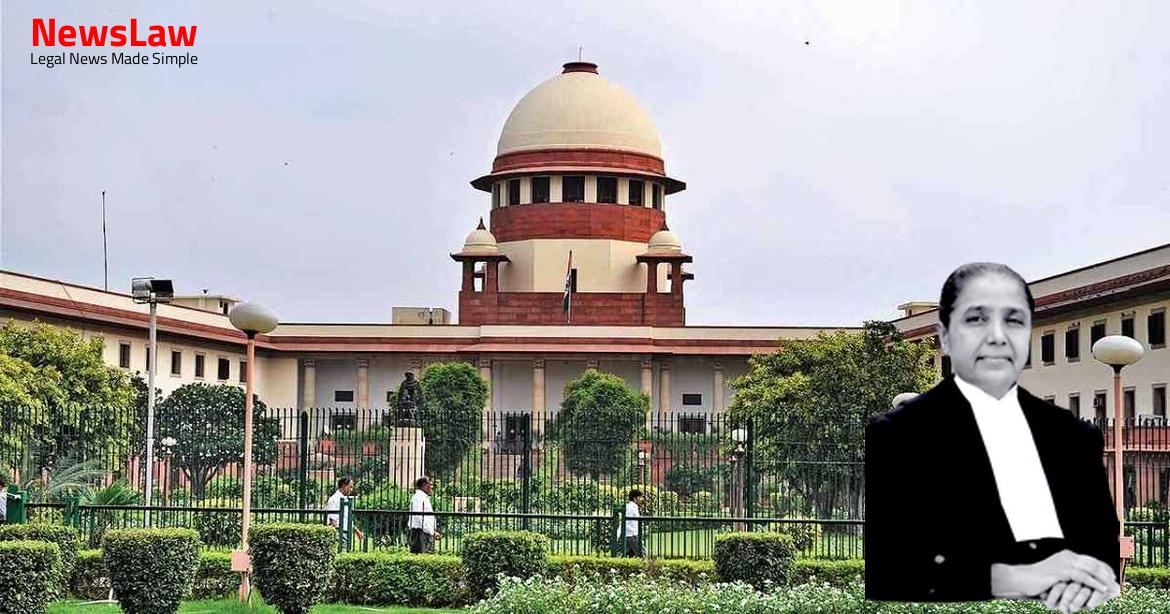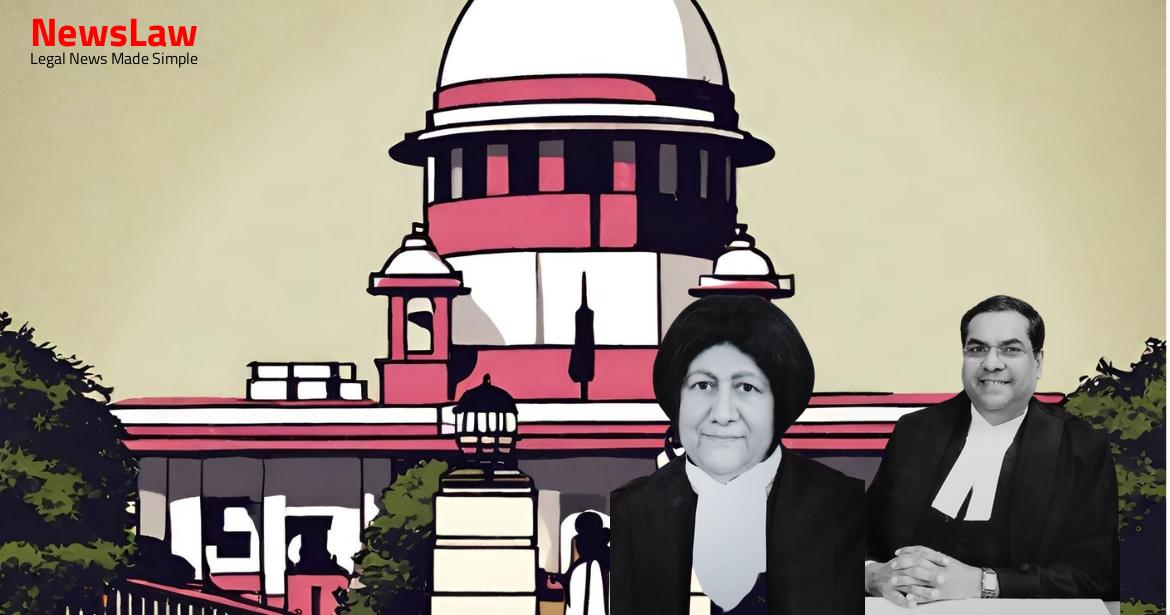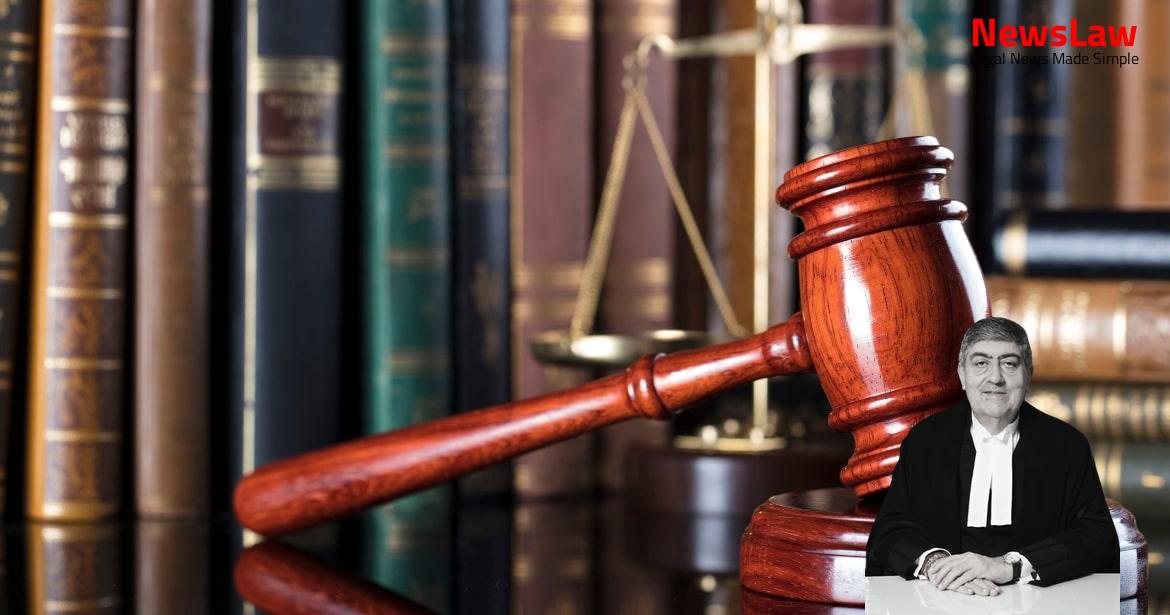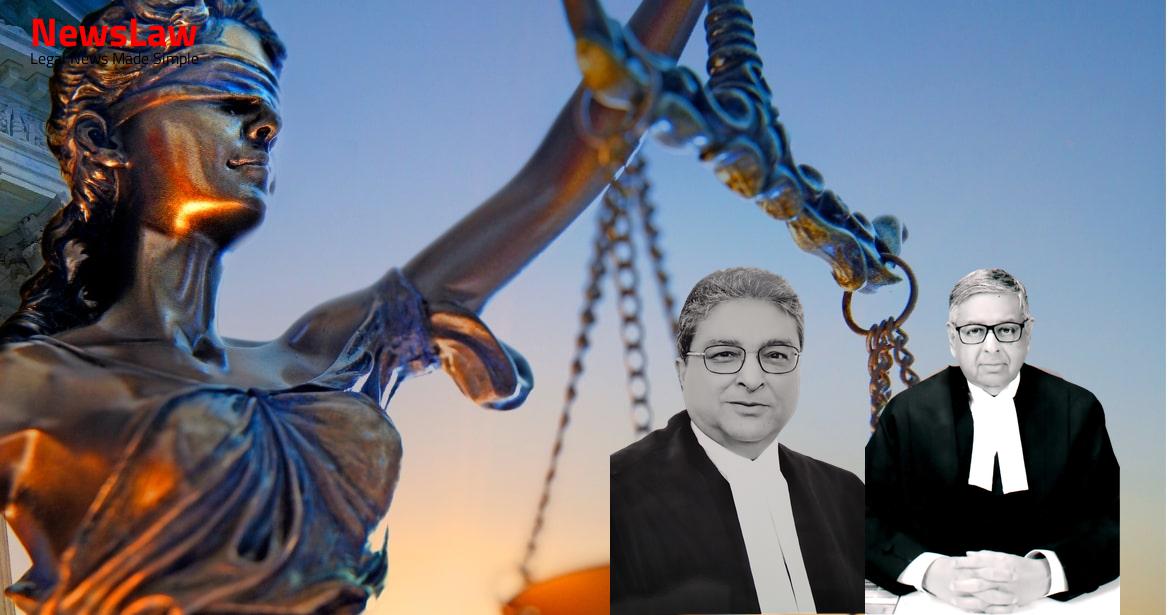In a heartbreaking turn of events, the Supreme Court has made a landmark decision in the case related to a land dispute tragedy, setting accused Ashoksinh Jayendrasinh free. The judgement comes after a careful evaluation of the evidence and legal arguments presented in the case. Stay tuned for more details and analysis on this significant development.
Facts
- Accused Nos. 1 to 5, along with their servant and another accused, gathered and started ploughing a disputed road with a tractor.
- A civil suit filed by Somabhai Rupabhai against Accused No. 1 and Accused No. 3 was already pending in the Court of Civil Judge, Modasa.
- The road in question was used by Somabhai Rupabhai and his family members for commuting.
- Appellant-accused No.1 and accused No.2-Kalusinh were involved in ploughing activities on the road on 23.11.1997 at 9:00 PM.
- Complainant and his family intervened and stopped the accused from ploughing.
- Accused started abusing the complainant and his family with caste remarks.
- Accused No.1 and accused No.2 fired gunshots at the complainant’s family members, resulting in the death of Somiben and injuries to other family members.
- Trial court convicted the appellant-accused No.1 and accused No.2 under Section 302 IPC.
- High Court appeals were filed by the appellants and respondent-State challenging the acquittal of other co-accused.
- FIR was registered against all accused parties on 24.11.1997 based on the complaint of the complainant.
Also Read: High Court’s Decision on Large Gala Allotment Dispute: Supreme Court Verdict
Arguments
- Appellant’s counsel argued that the fired bullet was not recovered, only empty cartridges near a mango tree.
- No evidence of electric light at the time of occurrence to identify the assailants, thus witness identification is questionable.
- Panch witnesses did not support the panchnama, raising doubts on the recovery of weapons from the appellant.
- Post-mortem report mentioned puncture wounds but did not specify the weapon causing them.
- Appellant contends that since the fired bullet was not recovered, ballistic expert cannot definitively determine the weapon used in the fatal gun wounds to the deceased.
- Ballistic expert only tested fired bullet C2 from rifle C1 and examined an empty bullet, not providing conclusive evidence that the gun shot injury was caused by the appellant’s recovered rifle.
- The non-recovery of the bullet raises doubts about the weapon used in the fatal gun wounds to the deceased.
Also Read: High Court Acquittal Case of State of Uttar Pradesh v. Jai Prakash
Analysis
- The cause of death was attributed to the rapturing of trachea, oesophagus, and difficulty in breathing.
- Witness testimonies regarding the firing of the fatal shots by the accused are contradictory and not conclusive.
- The scene of occurrence lacked sufficient light, casting doubt on the identification of assailants.
- No evidence of moonlight on the day of the incident to aid in identification of the accused.
- Panch witnesses turned hostile, necessitating corroboration for the recovery of weapons.
- Uncertainty regarding the weapon that caused the fatal injuries to the deceased (rifle or double barrel gun).
- Benefit of doubt given to the accused due to doubts surrounding the identification in darkness and the origin of fatal wounds.
- Contradictions in prosecution’s version regarding the shooters of the gunshots.
- Prudence requires corroboration for the recovery of weapons from an independent source.
- Lack of definitive statement in the post-mortem certificate on whether the injury was from a bullet or pellets.
- In an appeal under Article 136 of the Constitution of India, concurrent findings of fact cannot be interfered with unless shown to be perverse.
- Reference to case law: Mahesh Dattatray Thirthkar v. State of Maharashtra (2009) 11 SCC 141.
- Supreme Court will appreciate the evidence if the appreciation of evidence is found to be erroneous.
- The High Court did not properly evaluate the oral evidence, other evidence, and points raised by the appellant-accused No.1.
- The judgement affirming the conviction of the appellant-accused No.1 cannot be upheld.
- The impugned judgement needs to be set aside.
Also Read: Judgment Review: Supreme Court’s Ruling on the Capital Punishment Appeal
Decision
- Appellant/accused No.1, Ashoksinh Jayendrasinh, is ordered to be released forthwith unless his presence is required in any other case.
- Conviction of appellant-accused No.1 under Section 302 IPC read with Section 34 IPC, Section 307 IPC read with Section 34 IPC, and under Section 25(c) of the Arms Act is set aside.
- The appeal of the appellant-accused No.1 is allowed, leading to his release.
Case Title: ASHOKSINH JAYENDRASINH Vs. THE STATE OF GUJARAT
Case Number: Crl.A. No.-001123-001123 / 2010



